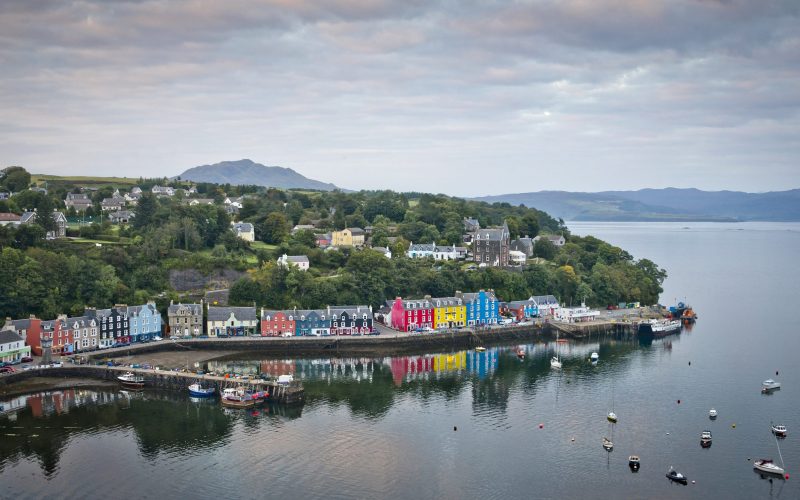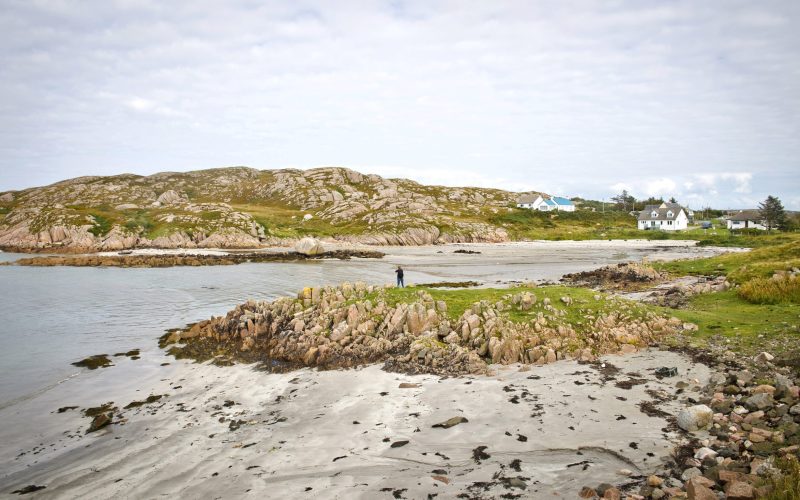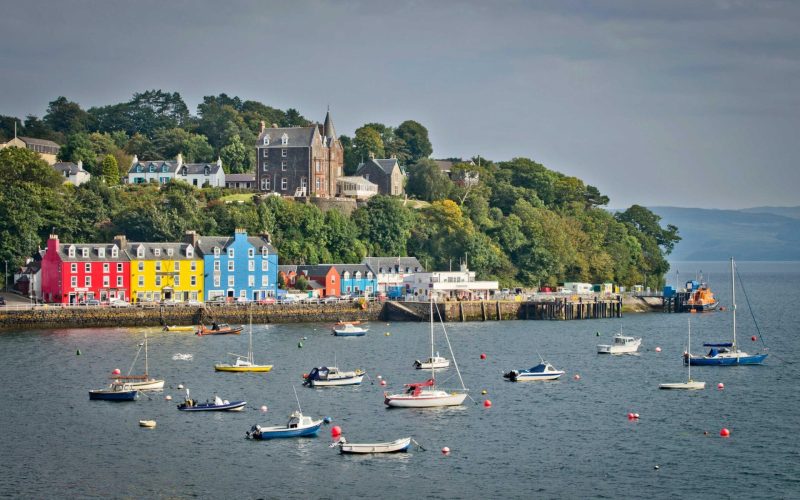Board the morning ferry from Oban to Craignure on Mull. Oban is best seen from the sea, so don’t miss the opportunity to climb on deck and enjoy the grand spectacle as you journey past the esplanade, Dunollie Castle and island of Kerrera. Keep your cameras ready for Lismore Lighthouse and Duart Castle. Journey through the northerly aspects of Mull and stay overnight in Tobermory. Day 2. Catch the 0930 hrs ferry to Kilchoan. Visit the most westerly point on the UK mainland then travel east to Salen. Continue north to Tioram Castle and onto the A830 to Glenfinnan and Fort William beyond. Oban is less than an hour away on the coast road.




£920
£960
£1000
10 hours / day
Obtain quote
Includes:
Ferry – Oban to Mull
Admission to Duart Castle
Ferry – Tobermory to Kilchoan
Accommodation supplement for guide
Complimentary Whisky
Complimentary Snacks
Excludes:
All meals
Accommodation
Please visit FAQ for more information
Oban to Craignure – (50 mins)
Duart Castle
Duart Castle stands guard as the Calmac ferries enter the sound of Mull. The castle dates back to the 13th century with major repairs and further development in the 16th century. The castle was restored from a ruin in 1911 and holds the treasures and history of one of Scotland’s oldest clans, the MacLeans. Duart Castle remains the clan seat of the MacLeans and is one of the last privately owned castles in Scotland. Visitors today can explore the castle and enjoy it’s magnificent setting.
Inch Kenneth
View the highland home of the infamous Mitford sisters from the Mull shoreline at Gribun rocks. The Mitford family owned the island from 1938 to 1960 before selling the island to Charles Darwin’s granddaughter. Inch Kenneth is one of the most historically important islands in Scotland. Along with Iona, this island has a significant number of important burial sites of the kings of Scotland. The island was named after St Kenneth, who founded a monastery on the island.
Macquarie Mausoleum
Lachlan Macquarie was born in 1761 on the island of Ulva. In 1775 he enlisted and had an impressive military career that lasted over 30 years. After the death of his first wife Jane Jarvis, Lachlan fell into a deep depression. He returned to Mull where he met and married Elizabeth Campbell in 1807. The British Crown then offered him a position in the colonies and he went on to become The Governor of New South Wales from 1810 – 1821, leading to him being described as ‘the father of Australia’.
Calgary Bay
Calgary Bay is a beautiful sandy beach on the North West coast approximately 12 miles from Tobermory. The main settlement at Inivea above the pier was cleared in the 19th century as part of the Highland Clearances. Calgary, Alberta in Canada was named after this bay by Colonel James Macleod the 2nd Commissioner of the North West Territories. Although originally from Skye he used to visit friends at Calgary House whilst on leave from Canada.
Glengorm Castle
Glengorm Castle is a 19th century country house located 4 miles North West of Tobermory. The Mishnish estate was purchased in 1856 by James Forsyth of Quinish. He was an unpopular figure who cleared the township of Sorne to make way for the new house which was completed in 1860. There are fascinating stories surrounding the bullying tactics Forsyth used to clear the land and also about the naming of the castle.
Tobermory
Tobermory is the main town on Mull with over 1000 inhabitants. It is a picture postcard port with its brightly coloured harbour-front buildings. The younger generation may recognise the location as the setting for the children’s TV show Balamory and the older generations may remember the town giving its name to one of the characters in the Wombles of Wimbledon. Away back in the 18th century the British Fisheries Society recognised its potential due to its natural harbour setting and established a fishing community.
Tobermory – Overnight.
Tobermory ferry to Kilchoan (35 mins)
Ardnamurachan
Ardnamurachan is the most westerly point on the UK mainland. Visit Sanna Bay, a beautiful white shell beach extending into a turquoise sea. The area is known for its magnificent coastal scenery. From the bay there are superb views of the Small Isles of Rum, Eigg, Muck and Canna where dolphins and whales are frequently seen from the shoreline.
Tioram Castle
Tioram Castle was the traditional seat of the Clan MacDonald of Clanranald. The Castle was seized by Government forces around 1692 when the clan Chief Allen Clanranald joined the Jacobite Court in France despite having sworn allegiance to the British Crown. In 1715 Allen torched the castle to keep it out of the hands of government forces. Castle Tioram (pronounced “Chee-rum” meaning “dry castle”) is a ruined castle which sits on the island of Eilean Tioram in Loch Moidart at the mouth of the River Sheil near Acharacle. The narrow approach road to the car park and the short walk across the bay is beautiful. At low tide the castle can be reached on foot but there is no access due to the poor state of the masonry.
Glenfinnan Monument
In 1745 the Jacobite Rising began at Glenfinnan when Charles Edward Stuart (Bonnie Prince Charlie) raised his standard on the shores of Loch Shiel. Seventy years later the 18m Glenfinnan Monument was erected at the head of the loch to commemorate this historic event. A Visitor Centre is collocated with the monument and both are run by the National Trust for Scotland
Glenfinnan Viaduct
The Glenfinnan Viaduct is a curved concrete structure 416 yards long and 100 ft high. The 21 arched viaduct was completed in 1901 by Sir Robert McAlpine as part of the Fort William to Mallaig line. More recently, Harry Potter fans recognise the viaduct from the Hogwart’s Express in the Chamber of Secrets and Prisoner of Azkaban. During summer months the Jacobite Steam Train has a regular timetable on what is considered one of the most spectacular train journeys in the UK.
Fort William
Lying in the shadow of Ben Nevis, Fort William is the ‘Outdoor Capital of the UK’ and the main town in Lochaber. Throughout time its strategic location at the NE aspect of Loch Linnhe and the foot of the Great Glen has positioned it perfectly to play a significant role in the shaping of the highlands. A fortified building has stood at the site of Inverlocky Castle for over 800 years. In 1645 the Marquis of Montrose defeated the Marquis of Argyll here, in a battle so ferocious that allegedly the river was reputed to have run red.
Castle Stalker
Castle Stalker is one of the most photographed castles in Scotland. The MacDougalls lost the castle when they were defeated by King Bruce at the Pass of Brander in 1308. It was then passed on to the Stewarts in 1388. King James IV of Scotland was a frequent visitor who used the castle as a base for his passion of hunting and hawking. In 1640 the castle passed to the Campbell’s of Airds on a drunken wager. The Stewarts regained the Castle briefly in 1689 before the Campbells reoccupied the fortress after a lengthy siege. The roof collapsed in 1840. In 1908 Charles Stewart purchased the shell, before it was sold again to Duncan Stewart in 1947. In 1965 Lt Col Stewart Allward bought and renovated the castle. In 1975 I acted as an extra and joined the cast of Monty Python to assault Castle Aargh in pursuit of the Holy Grail.
Oban